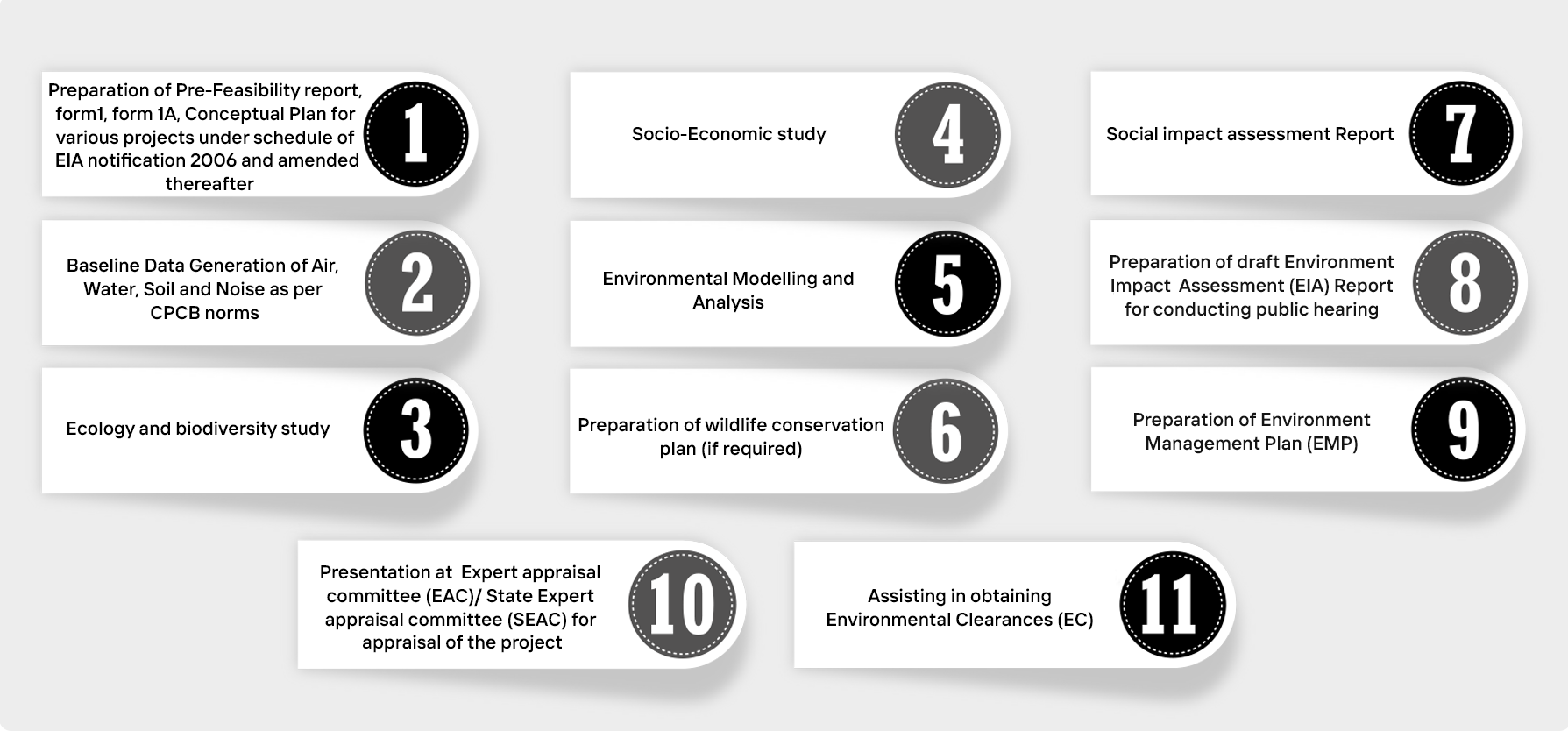Compliance under EIA Notification, 2006 refers to the process of adhering to the legal and procedural requirements established by the Ministry of Environment, Forest, and Climate Change (MoEF&CC) for obtaining Environmental Clearance (EC) for specific projects and activities. Aseries specializes in preparing comprehensive EIA (Environmental Impact Assessment)/EMP (Environmental Management Plan) reports to facilitate Environmental Clearance for projects across various sectors, as outlined in the schedule of the EIA Notification, 2006, and its subsequent amendments.
Compliance under EIA Notification, 2006 refers to the process of adhering to the legal and procedural requirements established by the Ministry of Environment, Forest, and Climate Change (MoEF&CC) for obtaining Environmental Clearance (EC) for specific projects and activities. Key aspects include.
Services Offered Under This Regulatory Compliance




